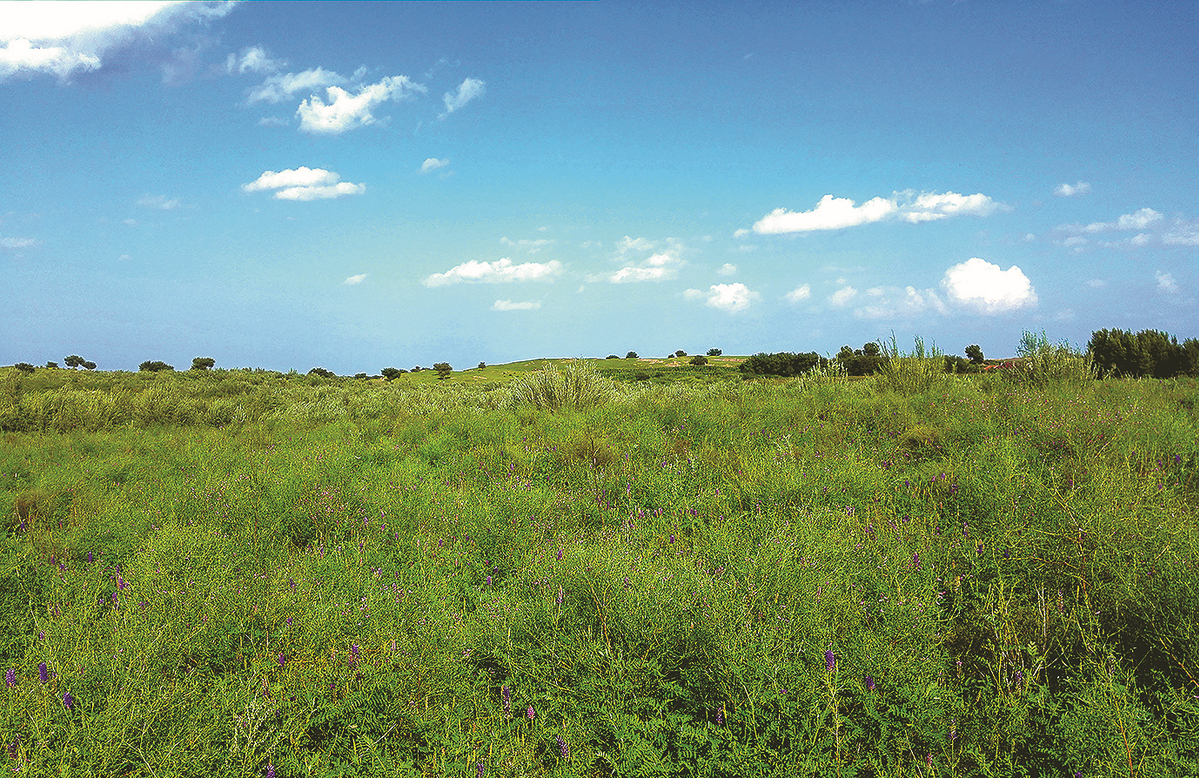
A scenery after the restoration of the Horqin Sandy Land. CHINA DAILY
The success of China's sand prevention and control journey hinges on scientific decision-making and planning, experts said.
"The pioneers made bold attempts, requiring courage and perseverance, which led to significant breakthroughs. The way in which the people in Zhangwu county in Liaoning province introduced tall deciduous trees into the sandy area is a prime example," said Dang Hongzhong, a researcher at the Chinese Academy of Forestry and the Three-North program research institute.
China's first sand control research institute was established in Zhangwu in 1952, a county that is located on the southeast edge of the Horqin Sandy Land, which at that time consisted of 90 percent sandy terrain.
"Sometimes in the morning, people couldn't even push open their door because it would be halfway buried in sand as they lived in the shifting sand dunes," recalled Qu Liping, a forest planting worker in Zhangwu.
Contrary to traditional beliefs that shrubs or grasses should be used for controlling sandy areas, Liu Bin, the first director of the institute, and other pioneers in sand control, introduced Mongolian Scots pine from the Greater Hinggan Mountains to curb sandy areas after deliberation.
In the shifting sandy land where not a blade of grass grew, planting trees seemed to defy natural laws.
"If grass was planted on the sandy soil, before it could establish roots, a strong wind would blow and scatter it. Repeated planting and destruction were the main challenges that our predecessors had to overcome during the severe desertification period back then," said Jiang Shengwei, deputy director of the Liaoning Forestry and Grassland Bureau.
"However, the Mongolian Scots pine's original habitat is the sandy soil in Inner Mongolia autonomous region. It has a relatively developed root system, grows fast and resists drought compared to other trees. It can grow to 20 meters high, and with its dense branches and needles, the trees can block wind and sand once planted," he said, explaining the reasons behind the decision.
Although all those attributes make it an ideal species for sand control and wind resistance, the difficulty to be conquered was how to get the tree planted and survive in shifting sand dunes with even drier and colder winters than those in the Greater Hinggan Mountains.
Liu and his colleagues made continuous attempts over three years. As expected, most of the pines brought back died during the winters, except for some saplings that managed to survive after inadvertently being buried by sand.
Drawing from this experience, Liu and his colleagues covered the planted pines with sand and soil, mimicking the original habitat of Mongolian Scots pine where snow naturally insulated the roots and retained moisture. As a result, a group of pines finally survived the next winter. Those surviving trees grew into the oldest existing forest in the sandy area and earned Zhangwu the title of the "birthplace of scientific sand control in the People's Republic of China".